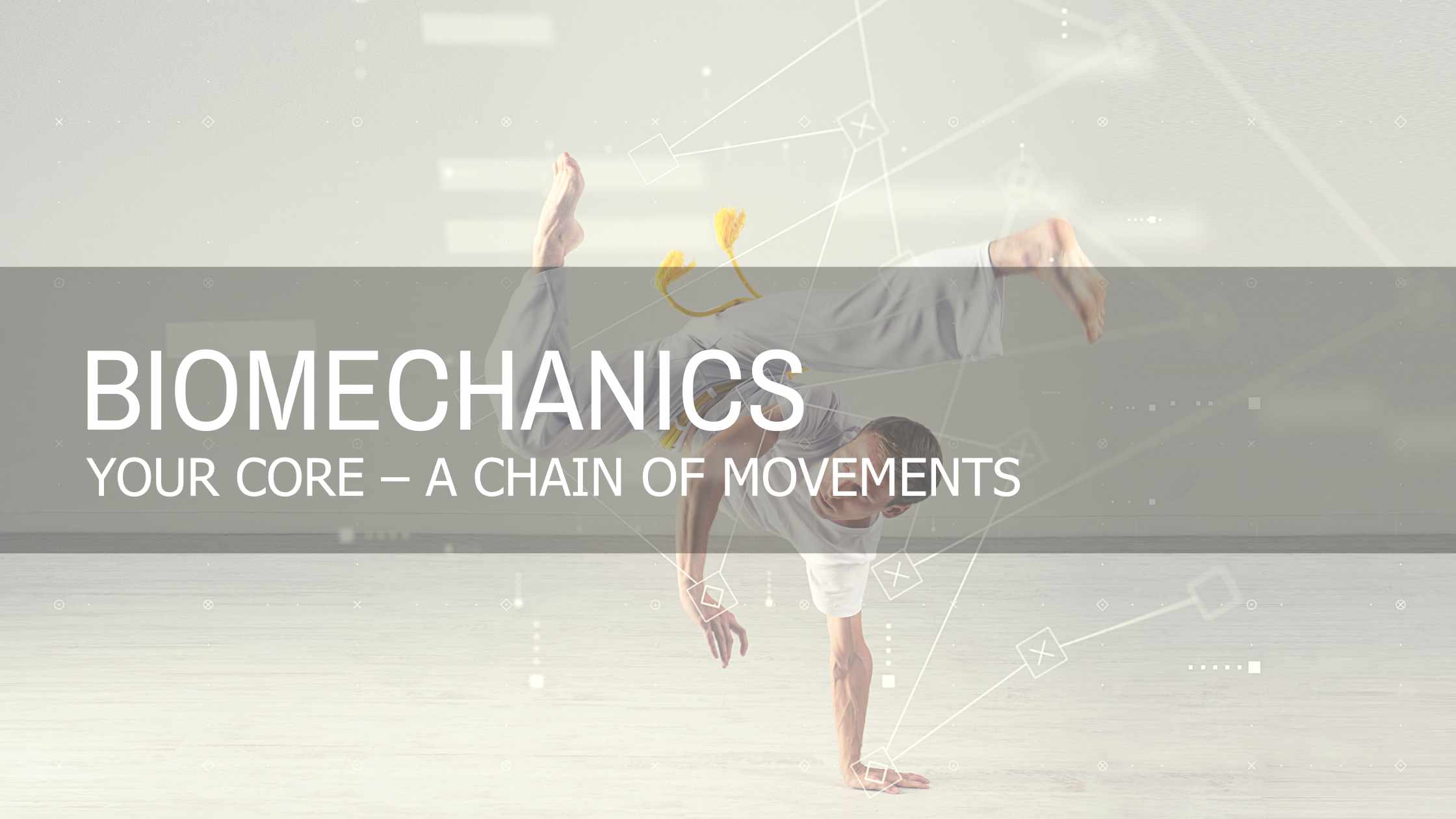
Sep 14 , 2021
0 Comments
Designed to Move | Your Core - A Chain of Movements
Muscles don’t work in isolation; they work in groups. There is always some sort of opposing tension, either supporting the area being moved or resisting it. An example of this relationship can be seen between the quad and the hamstring as they straighten and bend the knee - both oppose each other's tension.
These relationships in tension are mediated through the nervous system’s communication on a two way street; signals going to the brain with information about the environment, and communication going back with instructions on how to handle the situation.
It’s an amazing engineering masterpiece. That is ... when it works!
These signals often breakdown. Since muscles work together to create both movement and generate stability, if one of the muscles in the grouping is either under or overactive, the information being sent to or received from the central nervous system is distorted.
It’s also important to remember that muscles segment to other parts of the body. For example, a misfiring of a single muscle in the coupling that provides for the mobility of the ankle may impact not only the knee, the joint directly above the ankle, but it may set off a cascade through the entire kinetic chain, impacting the efficiency of all the other muscle couplings in the body. This is called altered neuromuscular efficiency.
While this happens in several different combinations and in multiple areas of the body, one of the greater influencers of poor movement is seen in the hips through a muscular distortion syndrome called lower cross syndrome.
The Problem
All Things Are Not Always Equal
There are several muscles that attach the legs to the pelvis and spine. They are generally grouped into two sets; muscles that flex the leg upward but can also tilt the pelvis forward (anterior tilt), and muscles that extend the leg behind the body but can also rotate the pelvis backward (posterior tilt). An example of this are the glutes and quads - the glutes help to extend the leg, while the quads assist in flexing the leg.
Due to several factors (one of the bigger ones being gravity), our bodies have a tendency to exhibit a forward tilting. In fact, we initiate walking by leaning forward into a controlled fall. Our center of balance shifts forward with gravity requiring us to step forward in an attempt to catch and absorb the momentum.
When the balancing of muscles in the legs are in equilibrium, this force can be transmitted through the legs and into the pelvis without incident. The problem arises when one set becomes too dominant, impacting the efficiency of the other set, as is often the case with the hip flexors.
How Does This Happen?
Lower crossed syndrome is a muscular distortion syndrome where hip flexor muscles like the rectus femoris and psoas become overused. As mentioned, these muscles tilt the pelvis forward, creating a reflexive lengthening of the posterior muscle groups like the glutes and hamstrings. The tilting compresses the lower back, destabilizing the hips and distorting movement through the entire body.
Functionally, this can create negative consequences. Every time we take a step forward the hamstrings and glutes contract to brace the knee and pelvis. Since the strength in these is now limited, our ability to stabilize is compromised. This places extra stress on the joints and connective tissues which leads to inflammation and eventually injury.
Yes, There is a Solution!
- Recognize which muscles are responsible for proper pelvic stability and strengthen them (like the glutes and internal obliques).
- Increase the mobility of the muscles that cause excess anterior rotation of the pelvis (like the rectus femoris).
- Condition your nervous system with functional movement patterns that coordinate the appropriate muscular firing patterns, including the glutes and internal oblique. (You’ll get an example in the video below so read on!)
- Reduce movements that emphasize the use of your hip flexors and quadriceps (like cycling or toe running, a.k.a. sprinting).
- Be mindful of your posture and how you walk - try to get your heel to strike first as you take a step and pull your weight forward through your stride.
How to Assess?
Want to find out if you have lower cross going on in your body? Here is a quick movement assessment you can complete to determine if you exhibit the signs:
In front of a mirror with no shoes on, stand with your feet shoulders-width apart and pointed straight ahead. Raise your arms overhead with the elbows fully extended. The upper arm should be right in line with the ears. Squat down to roughly the height of a chair without letting the arms fall; then go back to the beginning position. Repeat several times.
- Did you lean forward excessively so that your upper torso drew forward over the knees?
- Did your heels lift off the ground at the bottom of the squat?
If you answered yes to any of these questions, you tested positive for this common posture problem and you’ll want to pay attention to what comes next and watch the accompanying video on how to correct it.
Simple Corrective Methods
Correcting Overactive Muscle
Because we move in patterns, our bodies favor the use of certain muscle groups over others. Since we all have a tendency to tilt forward, this can place the hip flexors and knee extensors into a shortened and inflexible position. You’ll want to lengthen the rectus femoris via self-myofascial release, then follow the myofascial release with static stretching.
Below are the muscles you’ll want to focus on for lower cross imbalances this week:
- Rectus Femoris
- Rolling or self-applied pressure using self-myofascial release for 30-60 seconds each
- Stretch or lengthen each for 30-60 seconds each
Correcting Underactive Muscles
As mentioned above, pain in the body is commonly caused when how we move forces certain muscles to work overtime, while other muscles become lazy and don’t want to function. You’ll need to wake up these lazy muscles through isolated strength movements.
The gluteals and the internal obliques are the muscles you’ll want to isolate this week:
- Gluteals | Laying prone hip extension
- Internal oblique| Standing lateral side bends
- Anterior Sling system | Front lunge with rotation - 2 sets on each muscle group10-15 reps using a slow opening of the muscle, isolated hold at the bottom of the movement, followed by a controlled shortening of the muscle.
Now that you know which muscles are typically underactive and overactive, let’s put it all together for you. Watch the video HERE for a step-by-step breakdown on how to target each of these areas. Before you get started, make sure you have a lacrosse ball handy.
Start off by applying the techniques three times a week and build from there. Every so often, reassess your posture and see how far you’ve progressed. Soon, you’ll start to see noticeable changes in your body position and mobility!




